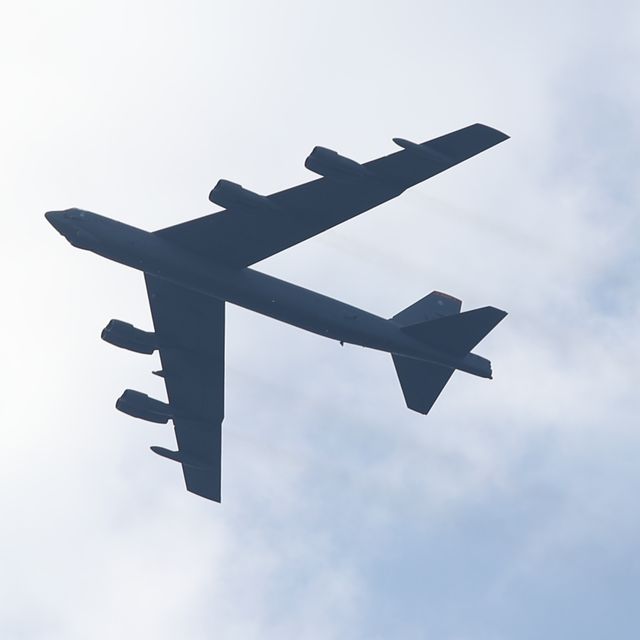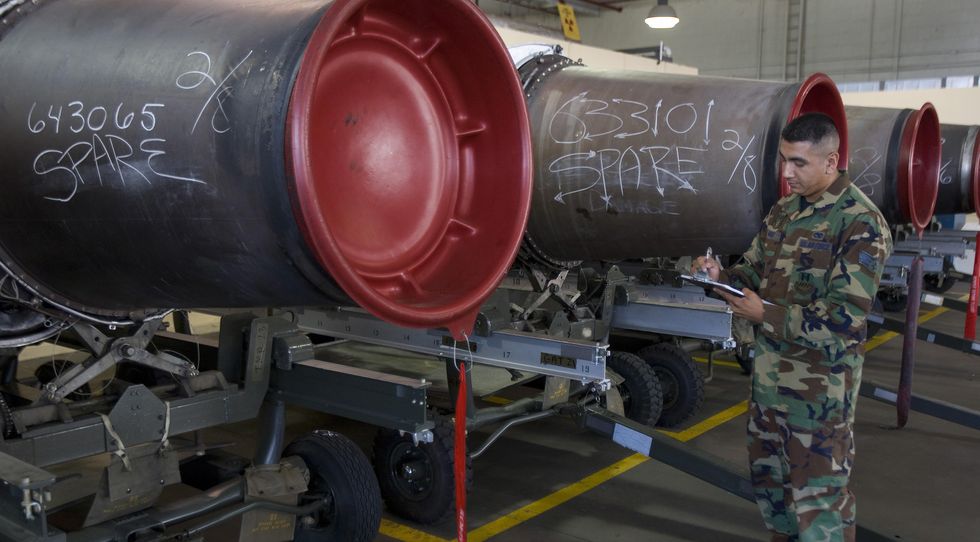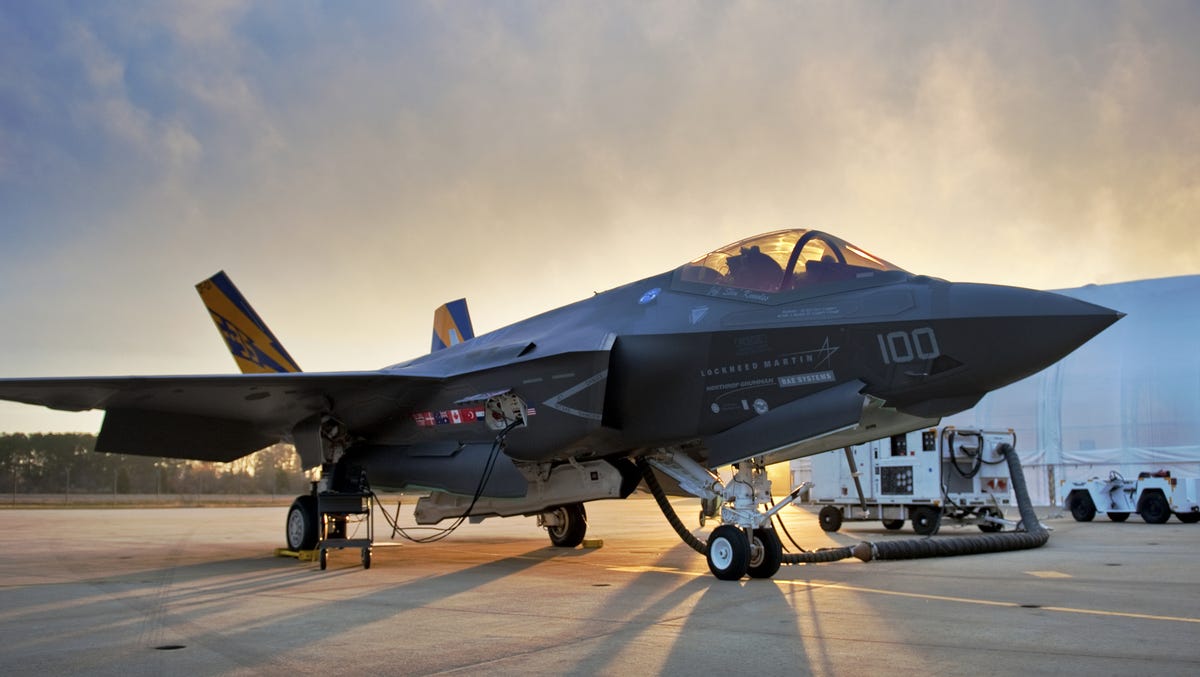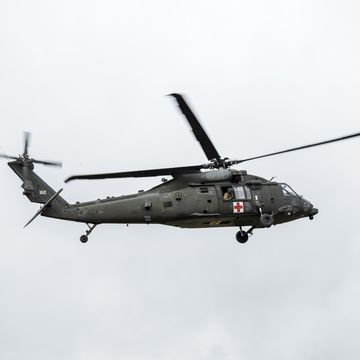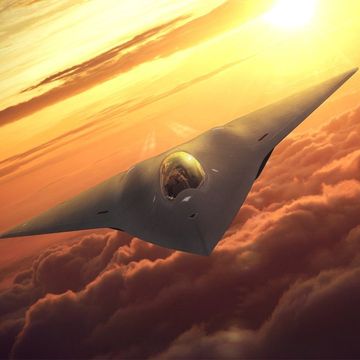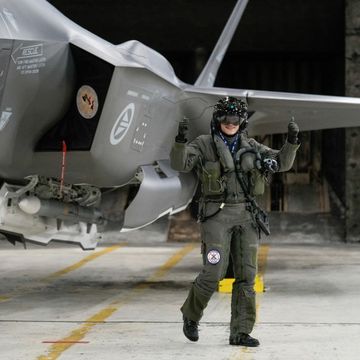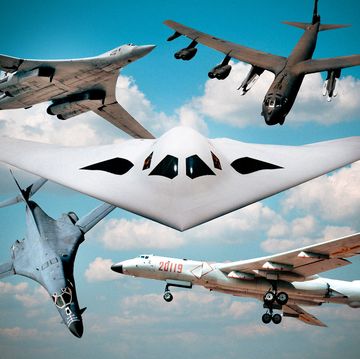- The U.S. Air Force 3D-printed the first metal jet engine part using additive manufacturing technology.
- The service can’t wait to print parts that are expensive or no longer made by manufacturers.
- The Air Force is only gradually printing more critical parts to ensure the process is safe and effective.
The U.S. Air Force has 3D-printed its first metal part for a jet engine. The replacement part, made for the engine that powers the B-52 Stratofortress bomber, will keep the plane flying until new engines are fitted to the aging jets in the late 2020s.
The Air Force likes additive manufacturing technology, with its promise of cheap and always available parts, but is proceeding slowly to ensure it doesn’t push the tech too far to potentially disastrous results.
✈ You like badass planes. We like badass planes. Let's nerd out over them together.
Air Force engineers at Tinker Air Force Base printed the part, an anti-icing gasket for the Pratt & Whitney TF33-P103 turbofan engine, after the supply chain for the original equipment manufacturer parts ran out. The TF33 is the original engine installed on the B-52H bombers as they rolled off the production lines in the early 1960s. Each bomber is powered by eight of the engines, which also power the E-3 Sentry airborne command and control aircraft and E-8 JSTARS surveillance aircraft.
The Air Force has taken the lead in 3D-printing aircraft parts. As the service’s aircraft fleet grows older, spare parts inventories shrink and disappear. The contractors that build the parts may end production (the TF-33 engine was invented in 1958) or even go out of business. In the past, the only alternative may be cannibalizing the part from grounded planes.
Additive manufacturing, otherwise known as 3D printing, offers a fast and inexpensive alternative. In this case, the Air Force needed new anti-ice gaskets for TF-33s. Engineers took an OEM gasket, reverse-engineered it, and printed new ones. So far, according to The Oklahoman, the Air Force has printed 30 parts, but may need a lot more; the Air Force and Air Force Reserve fly 76 B-52Hs, for a total of 608 engines. The Air Force plans to install new engines on the B-52H fleet later this decade, ensuring the planes will fly for 90 years or more.
The beauty of 3D printing is that as long as the service retains the know-how to print new parts, it doesn’t need a huge warehouse full of parts on hand. In the time it takes for logistics personnel to order up a part from another air base, they could instead simply print the parts themselves. In wartime, 3D-printing parts at forward bases would lessen the logistical burden of supplying bases thousands of miles from home.
The Air Force is taking a gradual approach to 3D printing. High-performance aircraft are hard on parts, and if the service makes a mistake, it could end up in the loss of an aircraft. In 2019, the Air Force introduced its first 3D-printed part: a toilet seat cover. This new part is not a critical part of the engine, but it’s still fabricated from metal and performs a key task.
While 3D printing in the civilian world has stumbled and not quite lived up to the hype, the armed services see a huge opportunity for simplifying complex supply problems. The Air Force (and the rest of the services) will gradually print more complex and mission-critical parts. The Pentagon’s warplanes are growing increasingly expensive to buy and fly, and the services must innovate to save money when at all possible.

Kyle Mizokami is a writer on defense and security issues and has been at Popular Mechanics since 2015. If it involves explosions or projectiles, he's generally in favor of it. Kyle’s articles have appeared at The Daily Beast, U.S. Naval Institute News, The Diplomat, Foreign Policy, Combat Aircraft Monthly, VICE News, and others. He lives in San Francisco.
